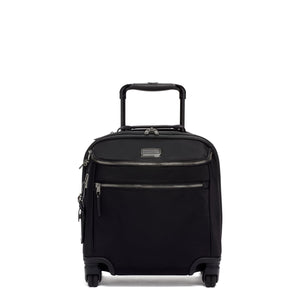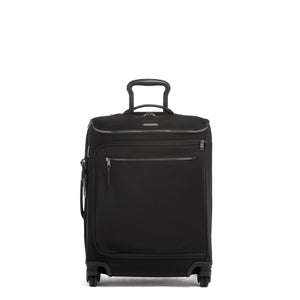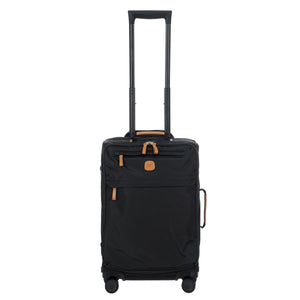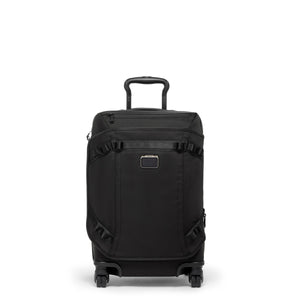No longer just for trips interstate, but for long-haul work trips, or more often, for adventures. At first it was prompted by the lost luggage horror stories of the immediate post-Covid years, but now by what seems to be a thirst for ‘travelling light’ in all kinds of ways.
In the last few weeks alone, we’ve had customers heading off for guided bike trips, month long treks, and small-boat cruises with archaeological experts. It’s as though, with the world reopening, we’re travelling in a different way, not just hotel and city hopping, but to combine a trip with an experience or an adventure, perhaps to achieve a meaningful goal, the fruition of years of training, or a lifelong dream to see an ancient temple, somewhere off the beaten track.

Sometimes the carryon limit is dictated by the ship or the transport or the light plane involved - or because their friend insisted, or because their airline lost their luggage last year and it ruined their trip.
Now I’m hearing from those who’ve already travelled with carryon only, waxing lyrical about the liberating aspects - the freedom from waiting for your suitcase to arrive (hopefully unscathed) at the airport carousel, or worrying about your case in the luggage racks at the end of the train. But also, the lightness that comes with a limited choice of clothing, and the speed with which you can pack and move to the next place. And the ease of getting into taxis, rental cars, and negotiating busy trains.
There’s always the ‘what to pack’ question. The best article I’ve read on this is by Sarah Wilson, best-selling author and self-described ‘snail’. Sarah recently moved to Paris, and describes living for six months at a time with a 10.8kg carryon, as she has done, on and off, for sixteen years. It’s a way of life for her, but so much of her advice is useful for those of us used to travelling with much more. Some of you are across the concept, while some of us have tried and not quite succeeded, and some are approaching the idea of taking so little with great trepidation!
Sarah wears her bulkiest shoes and clothing on the plane, and lives with just one jacket, one shirt, one pair of shorts and so on - all the while attending events, going on hikes, producing podcasts, and living in one of the most stylish cities in the world. It's an aspirational idea but you get the point - that we can wash and re-wear, and that nobody actually minds (or notices!) if your wardrobe is on repeat. Paring it back to the absolute minimum might take a few attempts and will no doubt mean different things to each of us.
I would add to that a trick I’ve learned from my attempts at lightweight travel, and that is to have a few supercharged accessories in your armoury. A silk scarf, a statement piece of costume jewellery, or a silk kimono jacket take up no room in your case and transform your simplest outfit in a flash.
And don’t despair about shopping – you can always send a parcel home with the post if you do find some treasures on your travels (depending on your destination of course!). You can even arrange to have essential equipment sent ahead or shipped home by luggage courier companies.

So – what would we recommend for Carry-On Only travel?
We’ve come down to a few key items:
A quality set of wheels. Although it’s entirely feasible to take a single backpack or duffle bag, it won’t be light, and given the size of airports and train stations, most of us will want or need to take a wheeled carryon.
People often seek out the very lightest options, in order to squeeze a little more stuff inside, but the difference of a half kilo can mean a flimsy case that might spoil your trip. It still needs to be sturdy, and have the backing of a world class warranty and international service, if something does go awry.
Handles, zips, and especially wheels need to work well, even on cobblestones, dusty tracks, or thick carpet, and cases need to withstand being occasionally relegated to the airline hold. Even if your bag fits the guidelines, airlines will sometimes make you check your wheeled carryon, as we found on one memorable flight out of Florence. Of course, it makes sense to invest in something that is allowable on Australian domestic flights. Here's a recent roundup of worldwide carryon limits.
Consider the soft or hard options - softer cases are generally lighter, and a little more versatile in their openings - some are top-opening, and some split in half, and some do both. Some have quick access pockets for stashing your laptop or jackets after security. Softer cases can be a little more forgiving when squeezing into tight spots in an overhead bin or in a car.
Hard-sided cases can be a little heavier, and extra protective for your contents, but they can be a little less forgiving if you're squeezing a few more things in.
What to look for:
- quality wheels, zips and side handles
- telescopic handles that stop at various heights
- pockets that suit your style of travel - such as laptop compartments, split compartments
- opening style that suits you -some people love a clam-shell opening, whereas others prefer to open the top so you can live out of the case on the luggage rack in your hotel
- expansion capability - in case you add some extra things to your case on the way home
Soft Sided: Tumi Voyageur Leger Carry On, Bric's X-Luggage Carry On, Tumi Alpha Bravo Carry On
|
A hard-working ‘extra bag’: Most airlines will allow you an extra ‘personal item’ such as a handbag. Some are more lenient than others, and will allow a roomier backpack or tote as your second item, while others are becoming quite restrictive, so make sure to check your airline guidelines and don’t forget about connecting flights.
Consider taking something that is versatile for daytrips, side trips, or can double up as your carryon if you do have to check through your case at some point on the journey, such as the trip home.

Tumi Voyageur Halsey Backpack, Tumi Voyageur Just In Case Tote, Tumi Alpha Bravo Navigation Backpack.
Another favourite strategy is to choose a smaller wheeled case with a slightly bigger companion piece. Such as the fabulous Tumi Voyageur Compact carryon, with matching backpack. Or the Bric’s Underseat or Pilot case. These compact sets of wheels can fit just about anywhere, and combine well with a larger second piece, such as the Celina backpack, which (like all the Tumi backpacks and totes) has the essential ‘add-a-bag’ feature so you can slip the backpack onto the trolley handle, saving you from lugging any weight when you can wheel it instead. Some of them also have a sleeve on the back themselves so if you're using them on another trip with a large suitcase you can slip them on top.
As you can tell, this is a topic we love to discuss, so please do get in touch to explore all the options and what might work best for your next adventures. We’d love to hear your thoughts and feedback. Drop us a line at contact@huntleather.com.au or call us on 02 9810 6811, pop in, or make an appointment for a video call.
Best wishes,
Sophie, Sam and Betty Hunt





0 comments